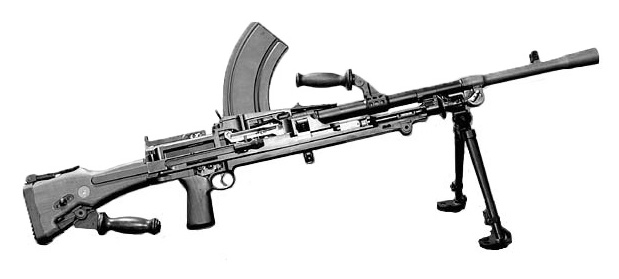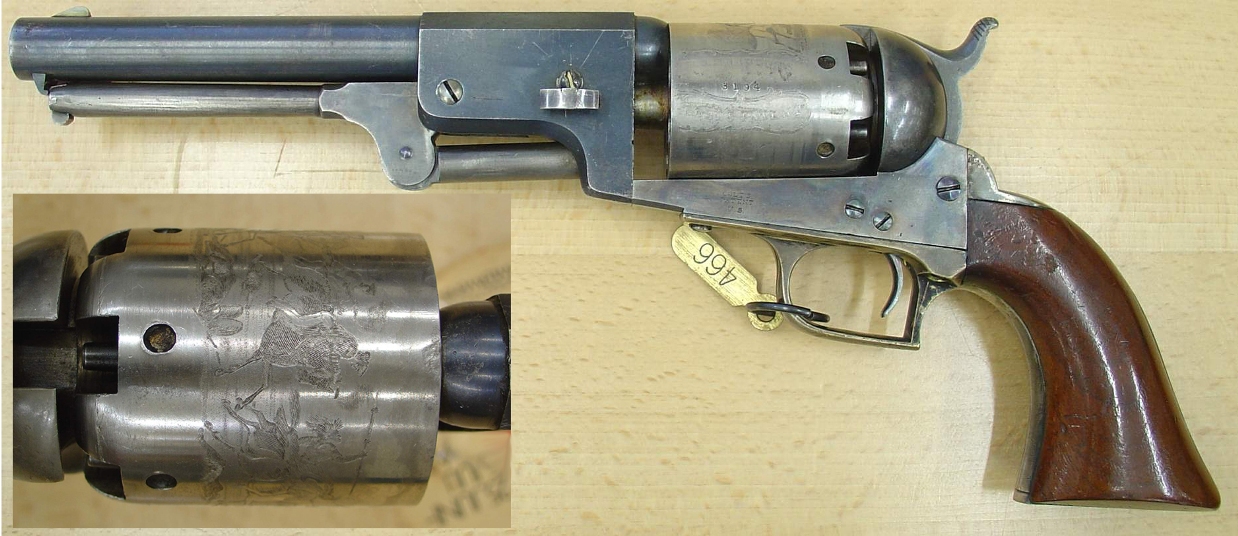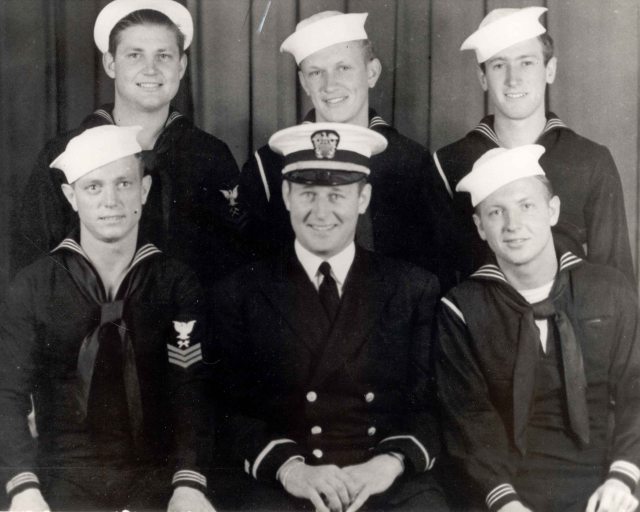|
Colt Machine Gun
The Colt Machine Gun or CMG was an open bolt belt-fed machine gun that fires 5.56×45mm cartridges designed by Colt Manufacturing Company in 1965. Colt hastily developed the CMG-1 to complement the CAR-15, a Colt branding of the M16 rifle, so that Colt might offer both of them as an alternative to the Stoner 63 weapons system. It failed to achieve any sales, and was replaced by the Colt CMG-2, which also failed to achieve any sales. The CMG-3 was a 7.62×51mm NATO version that failed as well. Colt Machine Gun #1 (CMG-1) Though marketed together with the CAR-15, the CMG-1 had few parts in common with it. One CMG-1 used direct impingement and shared the bolt, gas tube, and other operating parts of the M16. However, other CMG-1s used gas pistons. The CMG-1s also used the M16's pistol grip, front sight block, and flash hider. Similar to the Stoner 63, the CMG-1 could be fed from either side. The rate of fire was 650 rounds per minute. Only two or three CMG-1s were ever made. Colt ... [...More Info...] [...Related Items...] OR: [Wikipedia] [Google] [Baidu] |
Open Bolt
A firearm is said to fire from an open bolt if, when ready to fire, the bolt and working parts are held to the rear of the receiver, with no round in the chamber. When the trigger is actuated, the bolt travels forward, feeds a cartridge from the magazine or belt into the chamber, and fires that cartridge in the same movement. Like any other self-loading design, the action is cycled by the energy released from the propellant, which sends the bolt back to the rear, compressing the mainspring in readiness for firing the next round. In an open-bolt gun firing semi-automatically, the bolt is caught and held at this point by the sear after each shot; and in automatic open-bolt fire, it's caught and held in this manner whenever the trigger is released. In contrast to this, in closed-bolt guns the trigger and sear do not affect the movement of the bolt directly. Generally, an open-bolt firing cycle is used for fully automatic weapons and not for semi-automatic weapons (except some se ... [...More Info...] [...Related Items...] OR: [Wikipedia] [Google] [Baidu] |
Solenoid (physics)
upright=1.20, An illustration of a solenoid upright=1.20, Magnetic field created by a seven-loop solenoid (cross-sectional view) described using field lines A solenoid () is a type of electromagnet formed by a helix, helical coil of wire whose length is substantially greater than its diameter, which generates a controlled magnetic field. The coil can produce a uniform magnetic field in a volume of space when an electric current is passed through it. The term ''solenoid'' was coined in 1823 by André-Marie Ampère. The helical coil of a solenoid does not necessarily need to revolve around a straight-line axis; for example, William Sturgeon's electromagnet of 1824 consisted of a solenoid bent into a horseshoe shape (not unlike an arc spring). Solenoids provide magnetic focusing of electrons in vacuums, notably in television camera tubes such as vidicons and image orthicons. Electrons take helical paths within the magnetic field. These solenoids, focus coils, surround nearly the ... [...More Info...] [...Related Items...] OR: [Wikipedia] [Google] [Baidu] |
Squad Automatic Weapons
A squad automatic weapon (SAW), also known as a section automatic weapon or light support weapon (LSW), is a man-portable automatic firearm attached to infantry squads or sections as a source of rapid direct firepower. Weapons fulfilling this role can be light machine guns, or modified selective-fire rifles fitted with a heavier barrel, bipod and a belt/drum-fed design. Squad automatic weapons usually fire the same cartridge (though heavier-bullet variants are preferred) as the assault rifles or battle rifles carried by other members of the unit. This reduces logistical requirements by making it only necessary to supply one type of service ammunition to a unit. These weapons are light enough to be carried and operated by one infantryman, unlike medium machine guns (such as the M1919 Browning) that require a crew to operate at full effectiveness; or heavy machine guns (such as the M2 Browning or the DShK) which fire more powerful cartridges but are also crew-served and typica ... [...More Info...] [...Related Items...] OR: [Wikipedia] [Google] [Baidu] |
Colt Firearms
Colt's Manufacturing Company, LLC (CMC, formerly Colt's Patent Firearms Manufacturing Company) is an American firearms manufacturer, founded in 1855 by Samuel Colt and is now a subsidiary of Czech holding company Colt CZ Group. It is the successor corporation to Colt's earlier firearms-making efforts, which started in 1836. Colt is known for the engineering, production, and marketing of firearms, most especially between the 1850s and World War I, when it was a dominating force in its industry and a seminal influence on manufacturing technology. Colt's earliest designs played a major role in the popularization of the revolver and the shift away from earlier single-shot pistols. Although Samuel Colt did not invent the revolver concept, his designs resulted in the first very successful ones. The most famous Colt products include the Colt Walker, made in 1847 in the facilities of Eli Whitney Jr., the Colt Single Action Army or Peacemaker, the Colt Python, and the Colt M1911 pist ... [...More Info...] [...Related Items...] OR: [Wikipedia] [Google] [Baidu] |
Rodman Laboratories XM235
The Rodman Laboratories XM235 was one of the contenders for the Squad Automatic Weapon (SAW) trials in 1975-1976. Development The Fabrique Nationale Minimi (designated XM249), Heckler & Koch HK23 (designated XM262), and a heavy-barreled version of the M16 (designated the XM106) were used as a control group. They were supposed to be used to figure out a baseline for the SAW contenders, which were the experimental group. They were already eliminated from consideration because they were chambered for the 5.56mm NATO cartridge. The XM235 they designed was merely a prototype and Rodman Laboratories didn't have the facilities or expertise to copy and mass produce it. When the XM235 was selected for the 5.56mm SAW trials, Maremont Corporation and Ford Aerospace and Communication bid on the rights to make an improved model rechambered in 5.56mm designated the XM238. Ammunition The XM235 was chambered for the experimental 6×45mm SAW cartridge. It had a 105-grain .8 gramprojecti ... [...More Info...] [...Related Items...] OR: [Wikipedia] [Google] [Baidu] |
Stoner LMG
The Knight's Armament Company Light Assault Machine Gun (LAMG) is a light machine gun system developed by Eugene Stoner and manufactured by Knight's Armament Company (KAC). It was previously known as the Knight's Armament Company LMG. It is the current evolution of the Stoner Light Machine Gun concept. Development The KAC LAMG's lineage can be traced back to the Stoner 63, which was designed by Eugene Stoner. The Stoner 63 was a lightweight, highly configurable machine gun that saw heavy use by U.S. Special Forces during the Vietnam War. Though it was highly regarded by small specialized units, the Stoner 63 required a lot of maintenance to run properly; therefore, it was never adopted by standard infantry units. In 1971, Eugene Stoner founded the firearms company, ARES Incorporated. In 1986, Stoner and ARES introduced the ARES LMG-1 (AKA Stoner 86). The LMG-1 was Stoner's concept for a Squad Automatic Weapon (SAW). Like the Stoner 63, the LMG-1 was very lightweight, weighing o ... [...More Info...] [...Related Items...] OR: [Wikipedia] [Google] [Baidu] |
Ares Shrike
The Ares Defense Shrike 5.56 is an air-cooled, dual-feed rifle for semi or full-auto configurations that fires the 5.56×45mm NATO cartridge. The Shrike 5.56 can be supplied as a complete weapon, or as an upper receiver “performance upgrade kit” to existing M16-type service rifles and carbines. it is named after the Shrike, a carnivorous passerine bird, and was designed by Geoffrey Herring. Overview The Shrike 5.56 has gas-piston operation, a quick-change barrel with fixed headspace and MIL-STD-1913 rail interface for the mounting of accessories. It can fire from standard 30-round M16 magazines, 100-round Beta C-Mag drum magazines, and M27-linked SAW ammunition from 100-round or 200-round “soft-pouches” and 200-round hard plastic SAW ammunition containers. At 7.5 lbs complete weapon weight, the Shrike 5.56 is lighter than other squad automatic weapons, such as the M249 light machine gun and Heckler & Koch MG4. Variants There exist some notable differences between ... [...More Info...] [...Related Items...] OR: [Wikipedia] [Google] [Baidu] |
Colt Automatic Rifle)
Colt(s) or COLT may refer to: *Colt (horse), an intact (uncastrated) male horse under four years of age People *Colt (given name) * Colt (surname) Places * Colt, Arkansas, United States *Colt, Louisiana, an unincorporated community, United States * Camp Colt, Pennsylvania, a World War I military installation for United States tank training *Colt Island, County Dublin, Ireland * Colt Stadium, Houston, Texas, United States Acronyms *Bergen Corpus of London Teenage Language, a spoken language corpus of English *Cell On Light Truck: similar to Cell on wheels, but built on to a small truck, instead of a trailer *Combat Observation Laser Teams, an artillery observer responsible for directing laser-guided munitions * Computational learning theory, the mathematical field of machine learning algorithms Arts, entertainment, and media * Colts Drum and Bugle Corps, a drum and bugle corps from Dubuque, Iowa * ''The Colt'' (film), a 2005 television movie * The Colt (''Supernatural''), a fi ... [...More Info...] [...Related Items...] OR: [Wikipedia] [Google] [Baidu] |
United States Navy SEALs
The United States Navy Sea, Air, and Land (SEAL) Teams, commonly known as Navy SEALs, are the U.S. Navy's primary special operations force and a component of the Naval Special Warfare Command. Among the SEALs' main functions are conducting small-unit special operation missions in maritime, jungle, urban, arctic, mountainous, and desert environments. SEALs are typically ordered to capture or to kill high level targets, or to gather intelligence behind enemy lines. All active SEALs are members of the U.S. Navy. The CIA's highly secretive and elite Special Operations Group (SOG) recruits operators from SEAL Teams, with joint operations going back to the MACV-SOG during the Vietnam War. This cooperation still exists today, as evidenced by military operations in Iraq and Afghanistan. History Origins Although not formally founded until 1962, the modern-day U.S. Navy SEALs trace their roots to World War II. The United States Military recognized the need for the covert reconnaiss ... [...More Info...] [...Related Items...] OR: [Wikipedia] [Google] [Baidu] |
Drum Magazine
A drum magazine is a type of high-capacity magazine for firearms. Cylindrical in shape (similar to a drum), drum magazines store rounds in a spiral around the center of the magazine, facing the direction of the barrel. Drum magazines are contrasted with more common box-type magazines, which have a lower capacity and store rounds flat. The capacity of drum magazines varies, but is generally between 50 and 100 rounds. History and usage 1800s The first drum magazine was patented in 1853 by Charles N. Tyler. 1900s Pistols and rifles A drum magazine was built for the Luger (Pistole 1908) pistol; although the Luger usually used an 8-cartridge box magazine, the optional 32-cartridge ''Schneckenmagazine'' ("snail magazine") was also sometimes used. Moubray G. Farquhar and Arthur H. Hill applied for a British patent for "A New or Improved Cartridge Magazine for Small Arms and Machine Guns" in 1915 for their Farquhar–Hill rifle, and it was accepted in 1919. Submachine guns In 1 ... [...More Info...] [...Related Items...] OR: [Wikipedia] [Google] [Baidu] |
Vietnam War
The Vietnam War (also known by #Names, other names) was a conflict in Vietnam, Laos, and Cambodia from 1 November 1955 to the fall of Saigon on 30 April 1975. It was the second of the Indochina Wars and was officially fought between North Vietnam and South Vietnam. The north was supported by the Soviet Union, China, and other communist states, while the south was United States in the Vietnam War, supported by the United States and other anti-communism, anti-communist Free World Military Forces, allies. The war is widely considered to be a Cold War-era proxy war. It lasted almost 20 years, with direct U.S. involvement ending in 1973. The conflict also spilled over into neighboring states, exacerbating the Laotian Civil War and the Cambodian Civil War, which ended with all three countries becoming communist states by 1975. After the French 1954 Geneva Conference, military withdrawal from Indochina in 1954 – following their defeat in the First Indochina War – the Viet Minh to ... [...More Info...] [...Related Items...] OR: [Wikipedia] [Google] [Baidu] |
M60 Machine Gun
The M60, officially the Machine Gun, Caliber 7.62 mm, M60, is a family of American general-purpose machine guns firing 7.62×51mm NATO cartridges from a disintegrating belt of M13 links. There are several types of ammunition approved for use in the M60, including ball, tracer, and armor-piercing rounds.The M60 Federation of American Scientists. It was adopted in 1957 and issued to units beginning in 1959. It has served with every branch of the U.S. military and still serves with the armed forces of other states. Its manufacture and continued upgrade for military and commercial purchase continues into the 21st century, although it has been replaced or supplemented in most roles by other designs, most notably the ... [...More Info...] [...Related Items...] OR: [Wikipedia] [Google] [Baidu] |






